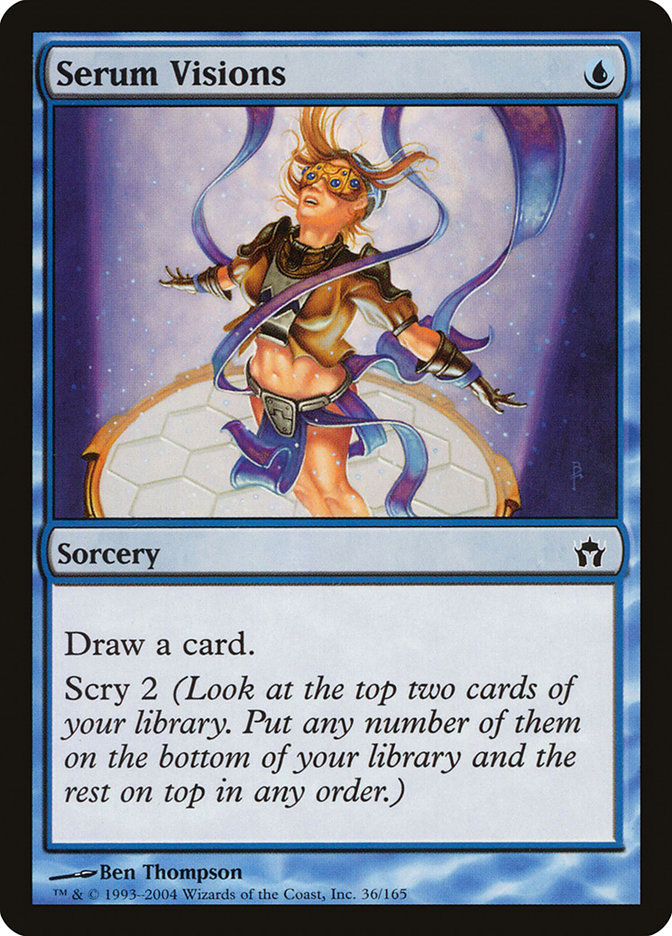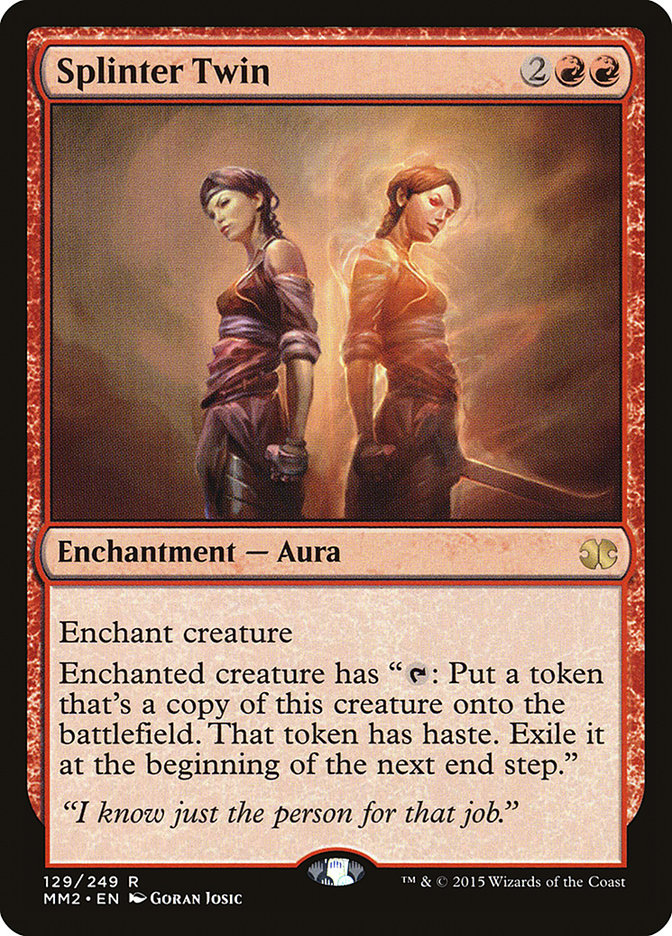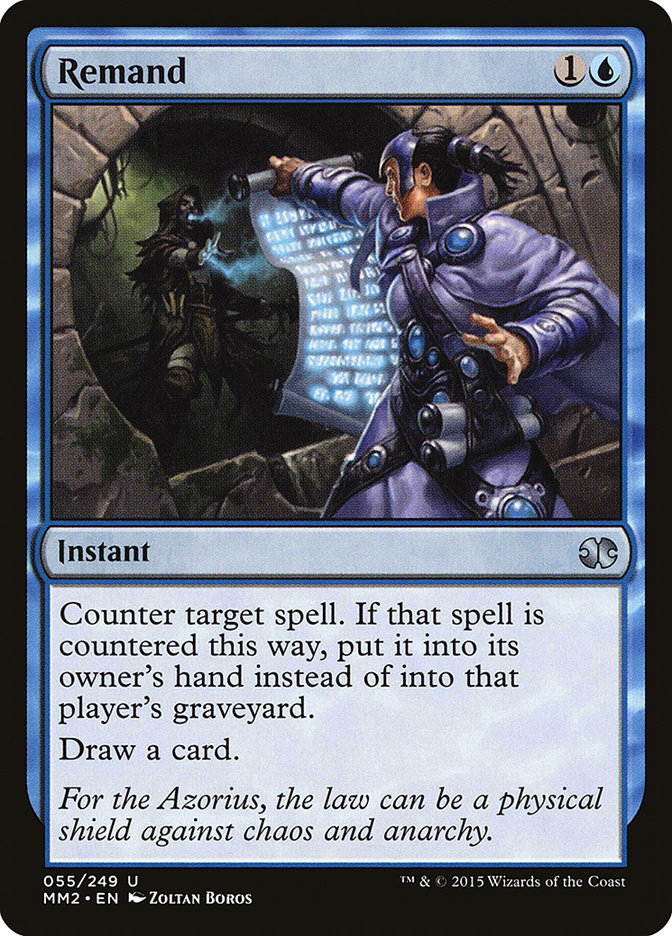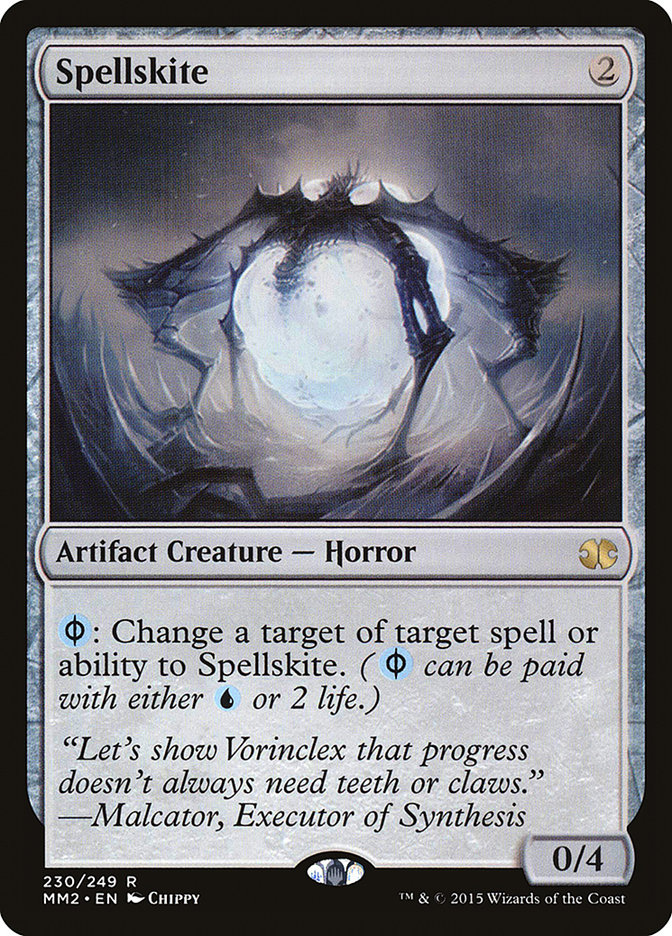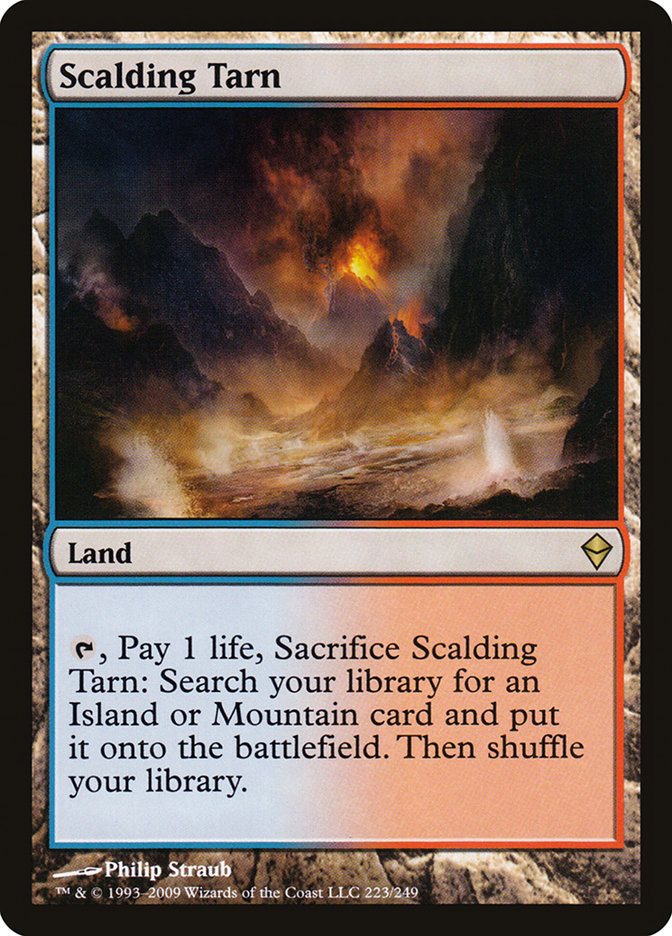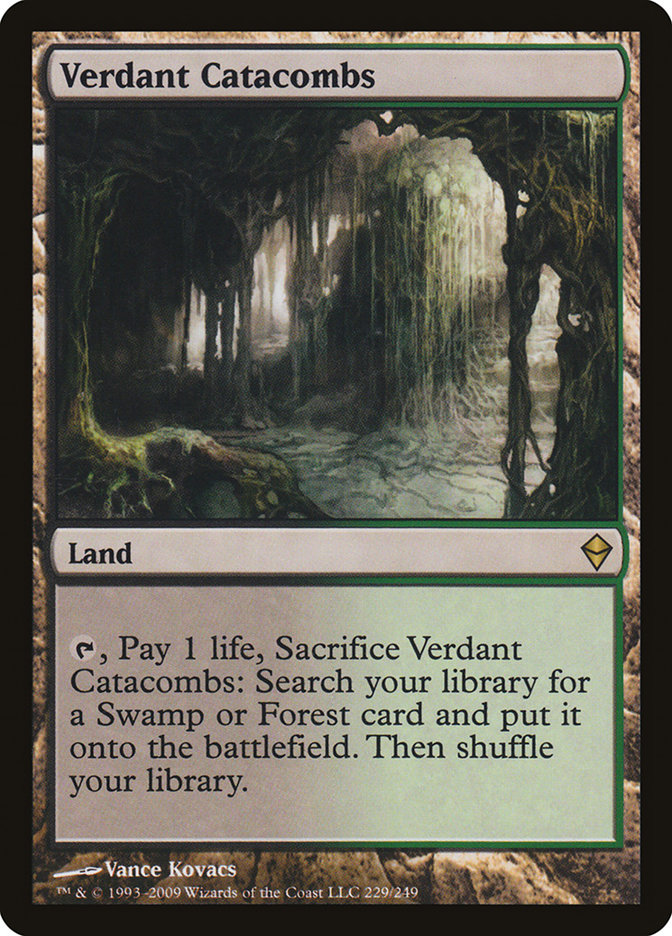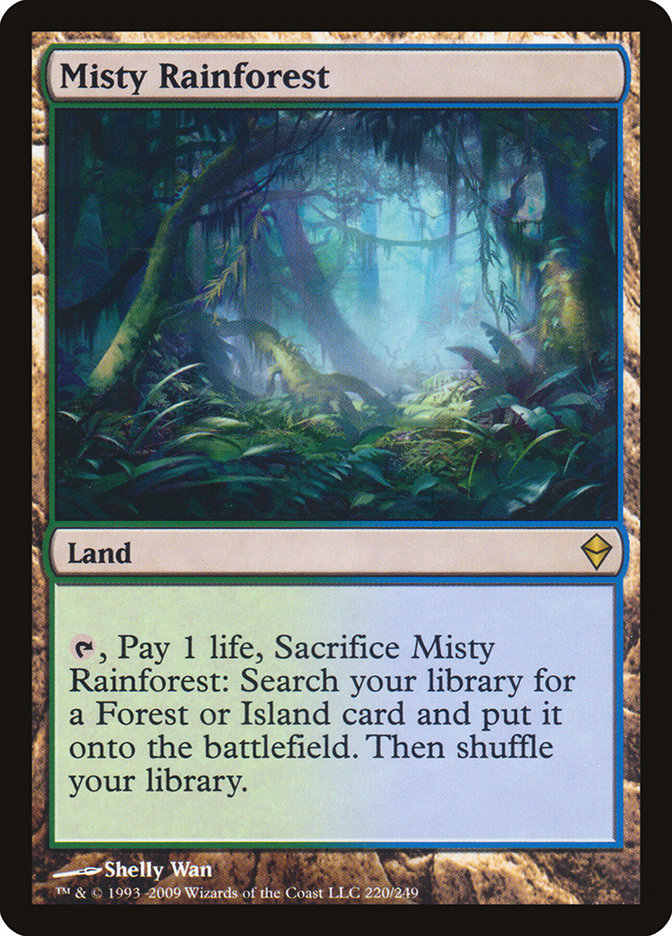When you think Power Nine, you think of a bunch of the most iconic cards in Magic. If, by some ungodly twist of fate, these cards no longer see play in the
format(s) that they’re legal in, you will still hear people note these cards whenever they talk about icons. When you think of basketball, American
football, or baseball, you may think of Michael Jordan, Joe Montana, or Derek Jeter among many other players.
So, when Modern is the format of discussion, it’s really tough to pinpoint the iconic cards if you haven’t played the hell out of the format. But trying to
figure out those iconic cards in the first place can be a heck of a task. I think that the first thing to recognize about this particular set of cards is
not necessarily their viability, as that can always fluctuate and shift. The focus should be on the impact they’ve had, historically, on the format. When
you think of Modern, you think of these cards. The cards that have shaped what it means to play the format. The cards that span across each color
and have left their mark and will continue to have a huge impact for years to come.
So, without further ado, here is, in no particular order…
My Modern Power Nine
It comes as no surprise that the best red card in the format is the most heavily played card in the format, as it’s the best removal spell in the format as
well as the easiest card to shoe in to any deck you want. No matter what times Modern has been through, no matter how “fair” or “unfair” the format became,
Lightning Bolt was the quintessential card for any deck that played red. Period. Even the Storm decks played Lightning Bolt in their 75 often. Many of the
best creatures in the format trade with Bolt, and if it weren’t in the format, you’d see cards like Wild Nacatl and the entire Merfolk and Affinity deck
run rampant. Lightning Bolt is to Modern as peanut butter is to jelly.
Modern warps around Lightning Bolt, but it isn’t as obvious as it seems. You’re forced to play the most efficient creatures you can play because of it. How
you do this is up to you. Some go wide and try to swarm and overload Lightning Bolt (Merfolk), some try to just demand that you have it (Zoo), or some just
go bigger (Loxodon Smiter). Unfortunately, this means that some creatures will just not be viable unless you conjoin them with a ton of other ways to make
Lightning Bolt as weak as possible against you. Whether this is a sign of health or not is up for you to decide, but every single format needs to have a
best card in order to maintain an identity. Lightning Bolt is that card, and it’s going to be that way for a long time.
Serum Visions gets a bad rap for not being as powerful as Ponder or Preordain, and I always found those arguments unbelievably silly and pointless, and
usually made by salty Legacy players who just 0-3’d with Splinter Twin because they tried to play it like Sneak and Show, but snap-blame it on bad luck.
Comparing Serum Visions to Ponder and Preordain in Modern is like comparing a number one ranked college football team to an NFL team. Sure, you can make
the comparison, and you’d probably be right in that the college team is definitely worse than an NFL team, but nobody really cares.
Serum Visions is to consistency what Lightning Bolt is to removal. It’s the best version of that, and it isn’t particularly close. It’s cheap, it’s
extremely efficient, and it does a whole lot more to the format than one would initially see. Without Serum Visions, the variance within the blue decks
would be a lot more unwieldy, and you’d see more attempts at compensating for it. Less one-ofs because you don’t see as many cards, and less high-powered
unfair combo decks. Sleight of Hand is good, but it doesn’t amount to the consistency that Serum Visions gives you. It’s hard to appreciate just how good
you have it until what you have isn’t there, and if you’ve ever played a game with a Serum Visions deck and never cast one, you’ll know what I mean.
Our first creature on the list, Tarmogoyf is the most efficient creature in Magic history. It’s the best creature at doing what it does, which is be a big
body. When you’re looking for easy access to big damage at a cheap cost, this is your go-to. What’s amazing about Tarmogoyf is that it’s not only an
amazing attacker but probably just as good of a blocker. There will probably never be a creature with no effective active text that will be as impactful as
Tarmogoyf, and with the influence of Tarmogoyf-esque cards, such as Tasigur, the Golden Fang, having a bunch of these types of creatures will always be
desired in some deck somewhere in Modern.
Pay two mana, get some protein, and be happy. That’s ‘Goyf in a nutshell.
If there’s a best creature in Modern, then Snapcaster Mage may be it. If Serum Visions allows blue decks to be more consistent, then Snapcaster Mage is the
card that allows blue decks to be more robust. Snapcaster Mage influences deckbuilding so much that you would be hard pressed to see those decks not want
to stretch their card choices to be as multi-layered as possible. Having a bunch of one-ofs as part of a package just gives you more choices for your
Snapcaster Mages, which means that you’ll be more prepared to deal with any situation at almost any time. I’d go as far as saying that Snapcaster Mage is
the reason why some spells that would otherwise not see much play, are played. Kolaghan’s Command would still be very powerful, but when paired with
Snapcaster Mage, it becomes this two-piece combo that greatly extends the longevity of your gameplan, and that’s just one very small example among a bevy
of other spells paired with it.
Whether it’s Bolt-Snap-Bolt, or Snap–Scapeshift, the card is the pillar of Modern, and that isn’t going to change anytime soon.
Splinter Twin isn’t the most powerful card. Heck, it may not even be great at times. But it might just be the most influential card, not only because of
the decks that have erected from it but its mere existence changing the way players play Magic.
Think about it. How often have you seen players not want to tap out for anything on turn 3 because their opponent has Sulfur Falls, Island, Steam Vents as
their first three lands, and nothing else gave them a reason to not think that they’re going to just straight up die next turn? You may not even
be playing the card in your deck, being Grixis Control or Blue Moon or something like that, but the fact that the card is a card being played in Modern can
completely contort the complexion of a game in ways that you may not have even provoked! This doesn’t even talk about how the Splinter Twin deck(s) have
been mainstays since the very first Modern Pro Tour, where it took the entire tournament down in a field of the most unfair decks Modern has ever seen.
Heck, its existence even makes other cards show up to help fend things off, Slaughter Pact being the one that pops into my head first.
When a card doesn’t have to be in your deck to illicit awkward lines out of your opponent, and when said card is going to straight up end the game if any
sort of slip up happens at all, it gets my vote for the most punishing card in the format.
Remand has really proved itself to be the best tempo card in the format and has been represented across a ton of different decks. From Delver to Splinter
Twin to Jeskai. You want to push an early advantage or gain traction via cards? Remand is your card. Often times, you just need to buy time to get to the
cards that you need early and keep your opponent off balance just long enough to kill them later on.
What’s important to understand about Remand is that it shouldn’t be treated as a counterspell under normal circumstances. If you’re playing Remand, then
you need it for one of the aforementioned reasons, which also means that you’re likely going to want to use it as early as possible. There really isn’t
much room for being crafty with it, as it does what it does. In short: Remand is much more of a cog to your engine, rather than the fuel. Still, it’s one
of the best cogs you can get, and even if the card isn’t as powerful as it used to be, it’s still the best at its job.
It’s not very often that sideboard cards are iconic throughout a format, but Spellskite is more than likely the best sideboard card in the format. Being a
colorless artifact already makes it very strong, as literally any deck can play it if it so chooses. Additionally, its ability is extremely powerful
against a plethora of decks, both fringe and streamlined. From Splinter Twin to G/W Hexproof to Affinity to Burn, to even Jund or removal-heavy decks.
Spellskite has a place almost everywhere, and that will never change. Even offensively, some decks can utilize it to their advantage. Infect is the deck
that’s very good at doing this, as it isn’t uncommon for that deck to win using regular combat damage. There are other ways of using it outside of that
binary, but if your deck has high impact spells that could target Spellskite, expect to play against it multiple times in your sideboard games.
When you absolutely need a removal spell, regardless of cost. This is the Swords to Plowshares of the format, plain and simple. It isn’t exactly as small
of a drawback, as the extra land is probably the most common way of putting someone back into a game than many imagine, but if you’re using it to further
press an advantage, then you’ll take what you can get. Regardless, this card is going to get things dead. Period. No questions asked. There isn’t another
card in the format that does this for a single mana without a latent self penalty.
The
planeswalker of Modern. Liliana has long been a mainstay of any black-based midrange decks since it was printed, and there really isn’t a replacement for
it. It’s almost always powerful at any point in the game, even when you’re light or heavy on mana. It synergizes well with anything that interacts with the
graveyard or has Flashback, and creates multiple choke points across different angles, all in one card. She is the reason why the B/G/X decks operate to
their fullest potential and will continue to be the biggest influence on those decks, even if there are inherent two-for-ones running rampant.
Honorable Mention
It took me a long time to consider all of the fetchlands as part of a “Power Nine,” as they’re, well, multiple cards, but they’re so important to Modern
and how the format works that it would be an injustice to not include them. Even as an honorable mention, it just doesn’t feel right, but it’s so close
that I think the term honorable mention doesn’t quite do enough to explain just how influential these cards are.
The foundation of Modern is based on these, whether you like it or not. Any and every multi-color fair deck will play quite a few of these, and it’s
essential in order to operate. Their function isn’t the only thing that makes them worthy of the spot, but their synergy with things like delve and
landfall are also notable. They are the glue that holds the fair part of Modern together, and as much as many do not like the thought of shuffling for
1/3rd of a game or taking damage too much (the latter of which can be remedied by better deckbuilding), they’re here to stay. Do decks tend to play too
many of these? Absolutely, but I don’t think that’s a strike against the lands as much as they’re a strike against the players that are overutilizing them.
Regardless, use them, love them.
Are there any cards that you think belong in the Modern Power Nine? Is there a card that you think shouldn’t be here? What do you think it’ll take for
something to make this elite class of Modern staples?



